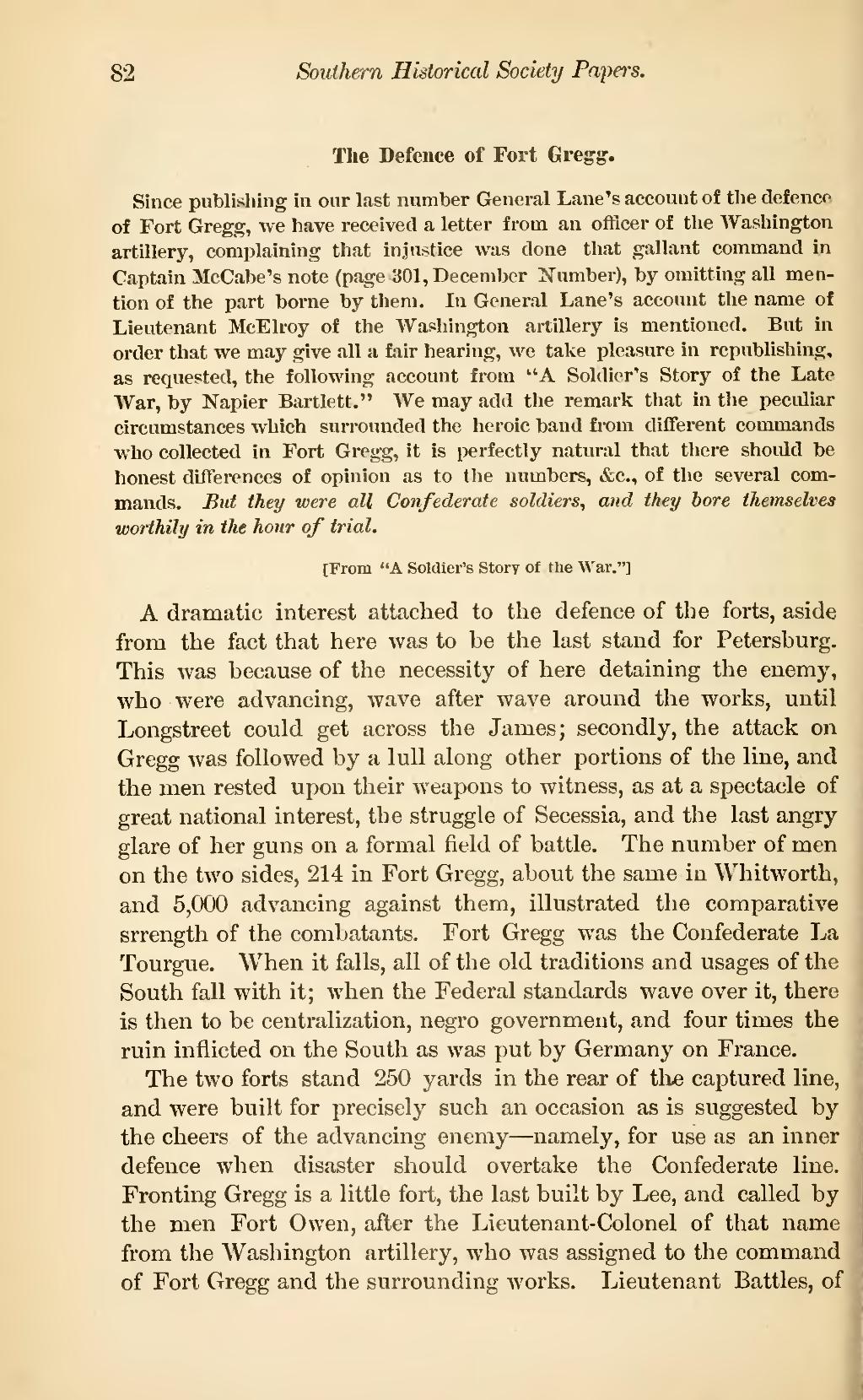The Defence of Fort Gregg.
Since publishing in our last number General Lane's account of the defence of Fort Gregg, we have received a letter from an officer of the Washington artillery, complaining that injustice was done that gallant command in Captain McCabe's note (page 301, December Number), by omitting all mention of the part borne by them. In General Lane's account the name of Lieutenant McElroy of the Washington artillery is mentioned. But in order that we may give all a fair hearing, we take pleasure in republishing, as requested, the following account from "A Soldier's Story of the Late War, by Napier Bartlett." We may add the remark that in the peculiar circumstances which surrounded the heroic band from different commands who collected in Fort Gregg, it is perfectly natural that there should be honest differences of opinion as to the numbers, &c., of the several commands. But they were all Confederate soldiers, and they bore themselves worthily in the hour of trial.
[From "A Soldier's Story of the War."]
A dramatic interest attached to the defence of the forts, aside from the fact that here was to be the last stand for Petersburg. This was because of the necessity of here detaining the enemy, who were advancing, wave after wave around the works, until Longstreet could get across the James; secondly, the attack on Gregg was followed by a lull along other portions of the line, and the men rested upon their weapons to witness, as at a spectacle of great national interest, the struggle of Secessia, and the last angry glare of her guns on a formal field of battle. The number of men on the two sides, 214 in Fort Gregg, about the same in Whitworth, and 5,000 advancing against them, illustrated the comparative strength of the combatants. Fort Gregg was the Confederate La Tourgue. When it falls, all of the old traditions and usages of the South fall with it; when the Federal standards wave over it, there is then to be centralization, negro government, and four times the ruin inflicted on the South as was put by Germany on France.
The two forts stand 250 yards in the rear of the captured line, and were built for precisely such an occasion as is suggested by the cheers of the advancing enemy—namely, for use as an inner defence when disaster should overtake the Confederate line. Fronting Gregg is a little fort, the last built by Lee, and called by the men Fort Owen, after the Lieutenant-Colonel of that name from the Washington artillery, who was assigned to the command of Fort Gregg and the surrounding works. Lieutenant Battles, of
